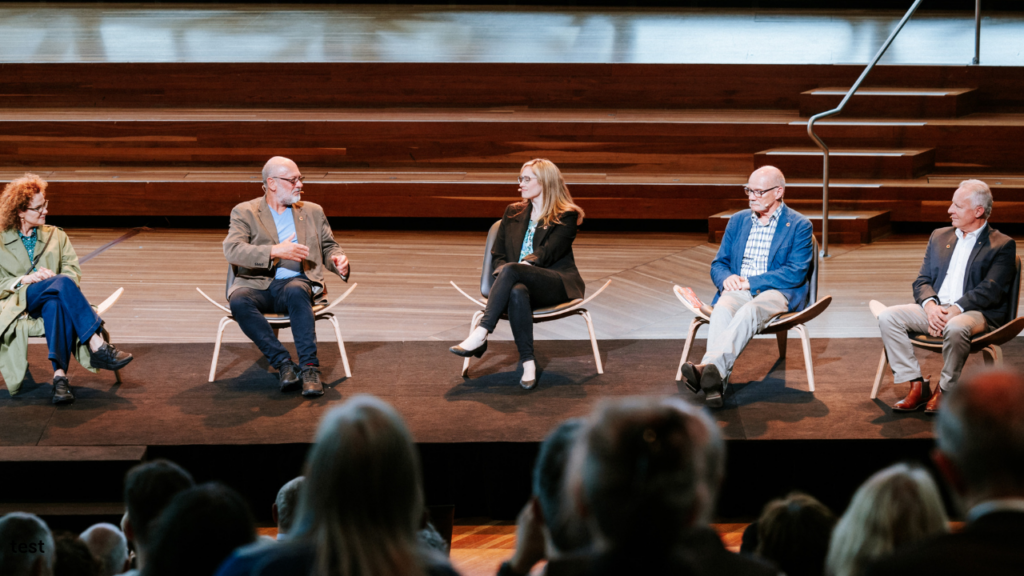The Treasury has just handed down its Federal Budget for 2024-25, and it marks a decisive turn towards Australia’s clean energy future.
So, what are the top three things you need to know about what’s in it for climate?
1. Billions for clean industries
Renewable energy and clean manufacturing can power the next era of Australia’s prosperity. We can capitalise on our natural advantage as one of the sunniest and windiest places on earth to rapidly grow zero emission domestic and export industries and replace coal and gas in the years ahead. By earmarking billions of investment to grow clean industries like critical minerals, renewable hydrogen and clean energy manufacturing, the government is charting a course to power past the end of fossil fuels. These are welcome steps towards realising Australia’s clean industry potential.
Funding announcements include:
- $19 billion to accelerate investment in ‘Future Made in Australia’ priority industries: renewable hydrogen, green metals, low carbon liquid fuels, refining and processing of critical minerals and manufacturing of clean energy technologies.
- $566 million to support research into, and development of, Australia’s critical minerals and strategic materials industry.
- $218 million for workforce development of the clean energy and industry sectors, including: $91 million to address vocational education and training sector workforce shortages for energy trades, and $10 million in 2025–26 to establish a National Hydrogen Technology Skills Training Centre, in partnership with the Victorian Government.
One disappointing inclusion in the government’s big industrial investment package is a $32 million commitment to develop rules and international trade arrangements for carbon capture and storage (CCS). This is an unproven technology promoted by the fossil fuel industry to extend the life of their polluting products. It has not been proven to work at scale for capturing onsite climate pollution from coal and gas projects, and does not deal with the much larger problem of the climate pollution produced when these fossil fuels are burned for energy. The government should be directing all its investment to things which help accelerate our shift to clean energy, not enabling CCS.
2. No new money for gas
Gas and coal are not part of the budget’s vision for a Future Made in Australia, underlining that our next era of prosperity can be built on cleaner foundations. This is an essential signal across Australia’s entire economy. Gas corporations have been enjoying record profits at the expense of Australian families and businesses, and the only permanent fix for households and businesses is to get off gas.
Last week, the Albanese Government released its ‘Future Gas Strategy’, which was widely panned (including by us) for overstating the importance of gas and ignoring the opportunity to replace it with clean alternatives. Now is not the moment to add to the climate crisis by burning more gas; it’s time to double down on investments into clean energy and industries which have enormous potential to create good jobs for Australians. The Climate Council is relieved to see no new budget allocations for gas, making the Future Gas Strategy just a load of hot air.
3. Backing in clean transport options
Growing shared, active and electric transport options means better, healthier ways to get from A to B. By shifting more trips to shared and active options, and electrifying more vehicles, we can cut climate and air pollution, enjoy quieter and cleaner neighbourhoods, and make our roads safer for pedestrians and cyclists.
Ahead of the Budget, the Albanese Government has been working to deliver its plan for a New Vehicle Efficiency Standard that will give Australians better access to cleaner cars that are cheaper to run – following strong and sustained advocacy from the Climate Council. Now, the Budget includes significant new funding to implement the standard and deliver more vehicle charging infrastructure to help people make the switch to electric vehicles (EVs).
Alongside funding to support the uptake of EVs, the government has also established a new fund to invest in active transport projects around Australia, and made contributions to shared transport in some states and territories. This funding will help shift the way we move in the right direction, but we’ll need to see far more of it in future budgets to give Australians real choice in how they move around.
Funding announcements include:
- $154 million to implement the New Vehicle Efficiency Standard, to support greater choice of fuel-efficient vehicles that will reduce petrol bills and transport pollution.
- $100 million to establish a new national Active Transport Fund that will upgrade and deliver new bicycle and walking paths.
- $78 million to resource the High Speed Rail Authority to further investigate what’s needed for the Sydney to Newcastle high speed rail corridor.


What now?
Australia’s shift to clean energy is well underway – visible on our rooftops, in our homes, neighbourhoods and businesses. This not only cuts climate pollution, but also helps families reduce the costs of living, makes businesses more competitive and creates good jobs and new investment in our regions.
To make these budget investments work, we now need two things: stronger policies to get all parts of our economy pulling in the same pollution-free direction, and clear bipartisan commitment to seize Australia’s clean energy potential. The investments in this budget will need to ramp up in the next term of government and beyond.
All political parties must now make clear that Australia is open for clean business with good new jobs, no matter who is in charge.










